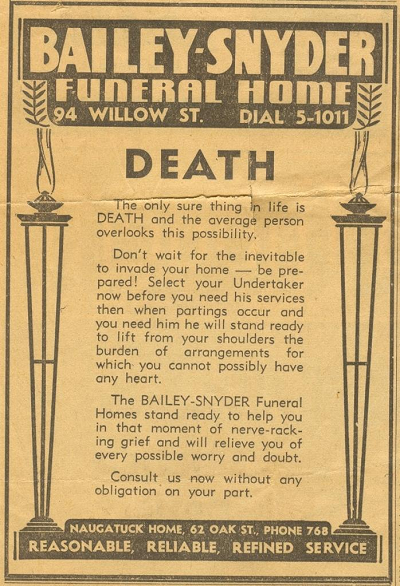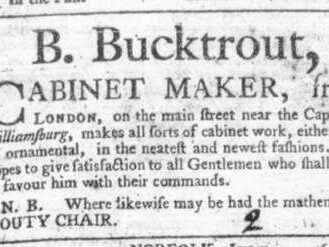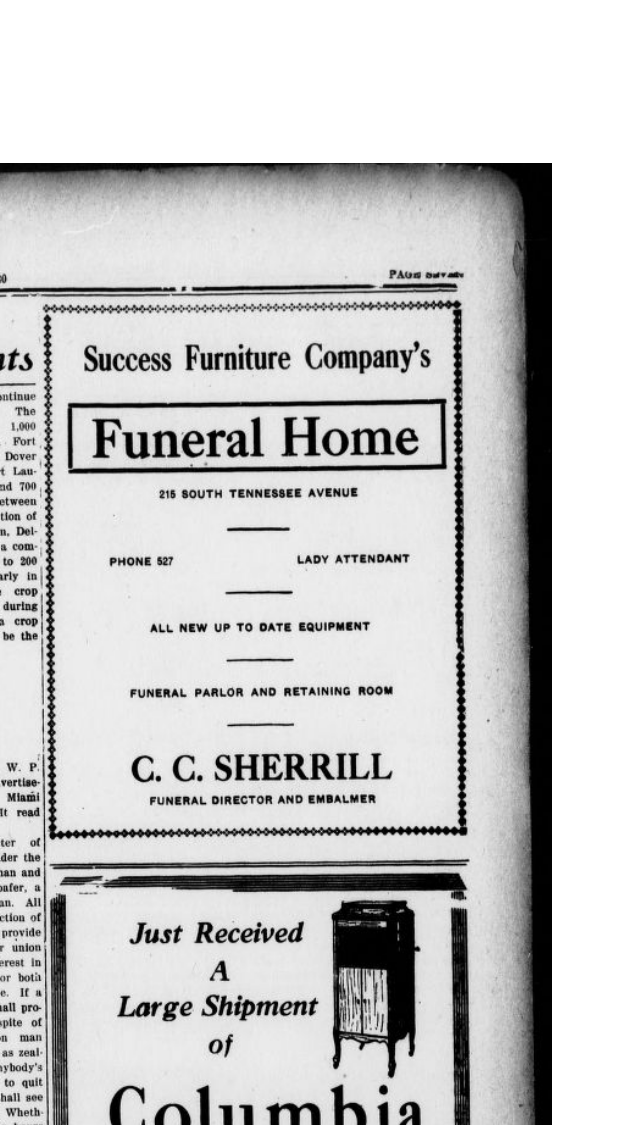“ The fear of Death follows from the fear of Life. A man who lives fully is Prepared to Die at anytime.
Mark Twain
Death seems to be a taboo word that many people cannot say or deal with, but for some, death is a way of life. Each and everyday they handle what will happen when your loved ones pass on to the next life. We know them as undertakers, morticians and funeral directors. They handle all the details of a funeral that we can not.
In 2020 there was around 3,358.697 deaths in the U.S. and of that number 1,844.164 were cremated. That is an amazing number of funerals and burials. The funeral industry from the inception has continued to grow each and every year. I guess you could say that death is not a dying business.
Cabinet Maker/Coffin Maker
In the late 18th century to the mid 19th century many people had the cabinet shop keeper make a coffin for the burial of a loved one. It would be a basic 6 sided pine box with a lid that would cost anywhere from $4 to $7. Nothing fancy just a plain box to bury a loved one in. After the cabinet maker built the box, a family member or friend would collect it and the family would prepare the body. When people in that time period died, the body was usually washed, dressed and laid out by family. If the person who died had no one to perform this act the town buried them as they died, sometimes not even in a box. As time went on, Wakes became a very popular way to honor the deceased. Wakes were held in a home where the deceased would be laid out in their coffin,{ some of the coffins then were made for the wealthy from Rosewood or Mahogany that had spring release lids that could open from the inside, they would usually cost around $50} and friends and relatives would stay with the body for around a week to honor their memories and make sure they were dead. Oh yes that’s right, it was believed that for a period of 3 days a person might just be in a coma and not dead, so they wouldn’t bury a person till at least the 3 days were over. Another reason for persons to stay with the body at a wake was so a bad spirit could not enter the body, and also because if it was hot weather and the body as it was decomposing, vermin such as rats would be around. This is why there was always one person watching over the body, day and night.
The Start of Embalming
The emergence of embalming came about during the Civil War, due to the fact that with so many bodies being sent home on the railroads at the time, something had to be done to help the bodies not decompose so fast and explode. It got so bad that the railcar handlers refused to be with the bodies because of the smell. The first way they embalmed a body was to use Arsenic, but they found out later that as the body decayed the Arsenic would leech out of the body and into the soil and water. That would change soon. When Abraham Lincoln was assassinated his body was embalmed with flomalgahye and he was shown all over the country in a selled funeral wagon. With this showing, embalming became the new way of wakes and funerals.
Thomas Homes who served during the Civil War was tasked with finding a better way of embalming bodies. He found that chemical properties of Formaldehyde, was a good way of keeping the bodies longer. When he resigned his commission from the Army, he started offering his services to the public for $100.
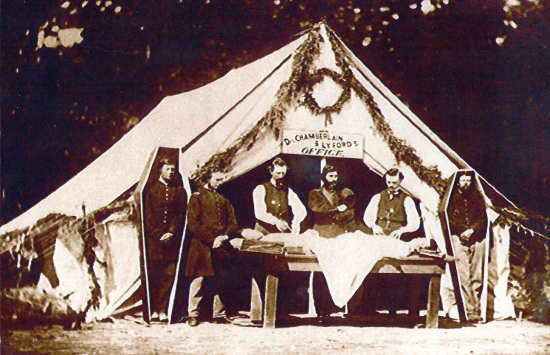
The first embalming school was founded in 1882 in Cincinnati, Ohio by Joseph Henry Clarke. The push for embalming was becoming more popular when families no longer wanted to handle the funerals at home.
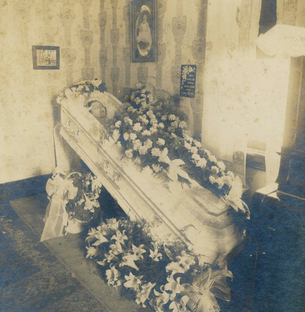
Undertaker
The term “Undertaker” means a person whose business is preparing dead bodies for burial or cremation, and making arrangements for funerals. {definition from Oxford Languages} When funerals became more profitable then making cabinets, the shop owners turn towards being undertakers. They handled the embalming of the deceased, the washing, dressing, make-up and combing of hair. They laid out the body in the casket and held the funeral services, that usually lasted 3 days, and even the burying of the body. They would still handle all this even if the funeral was to be held at home. In those days, some Undertakers did not have a Funeral Parlor yet.
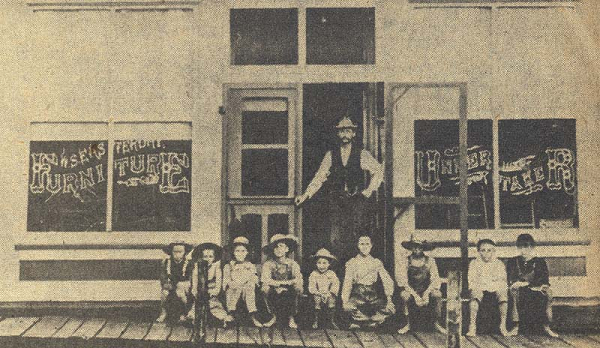
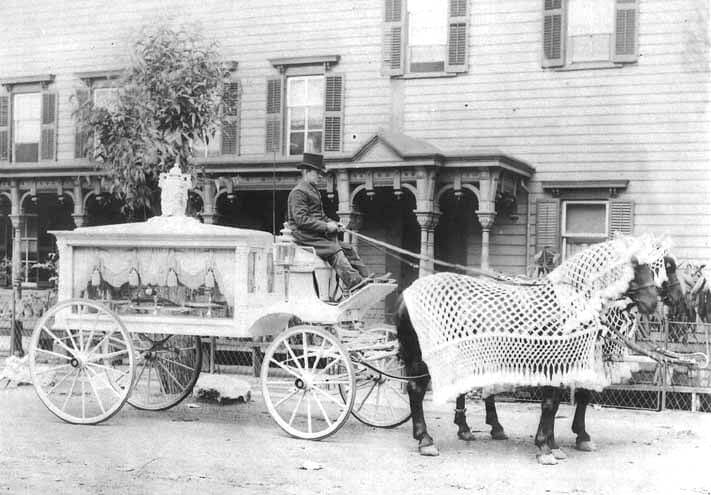
Funeral of a wealthy person by horse and Funeral Wagon
The Funeral Home
With the demands for organized funerals, funeral home business grew 100% between 1865-1920.In this time range almost 25.000 funeral homes were established in the country. But let’s jump back a little to the very first funeral home.
Bucktrout, Bauchman, and Kir & Nice are contenders for the country’s oldest funeral home, but here is where it gets muddled a little. They were all cabinet makers first, and Kirk & Nice starting making coffins in 1761, but here is where the difficulty lies, Bucktrout is stated to say they beat that date by 2 years before, and Bachman was after both. We are not sure when Kirk & Nice opened their doors to become a funeral parlor, but Bucktrout opened in 1759, first as a cabinet maker with Anthony Hay. They started making coffins and provide burials on the Bucktrout farm if the deceased had no place else to be buried. Overtime Bucktrout transitioned into a funeral parlor. Bucktrout moved his base of operations many times, but always stayed in Williamsburg Va. Bucktrout also established the first funeral home to own and operate a crematory. This funeral home is still operating today. It has went from cabinet making, to coffin maker, to Funeral Parlor, to crematorium.

Creamatorians
With the space getting limited in many cemeteries across the country, being cremated was becoming a popular option to burying our loved ones. The process to cremate someone goes like this: the body, dressed or undressed, and medical devices removed {false teeth, glasses, false limbs}, and jewelry if wanted can be left on or removed. From here the body is placed in a wooden coffin, then moved to the crematory chamber that is heated to a temperature of 2000 degrees. The process to cremate a body takes anywhere from 1.5 to 2 hours, when cooled a magnet is used to remove any metal that is left and the ashes are placed in a box or urn. When this is all over the ashes can be kept or buried.
The funeral business is usually run by a family, and sometimes the family lives in the funeral home. It was said that in 2018 there were approximately 19,177 funeral homes in the U.S. but in 2019 it had decreased to 19,136. I feel that the smaller homes are finding it harder to compete with the bigger ones such as Bucktrout.
Thanks for coming by again to read about a little bit of history that eventually we will all be a part of.
I am going to leave you with a few advertisements for funeral parlors through the years in different states.
